|
| The buttons above images are identified and described below: | |
| BUTTON | DESCRIPTION |
| <<BACK | Go Back to the previous image in the set |
| NEXT>> | Go to the Next image in the set |
| ZOOM IN | Zoom into image |
| NORMAL | Restore image to initial size |
| ZOOM OUT | Zoom out of image |
|
Repeating an operation is most effectively performed by clicking on a button and then pressing the enter key repeatedly as desired. Panning is most effectively performed by using the cursor keys. |
|
The Industrial Excess Landfill (IEL) Superfund Site, Uniontown, Ohio (U.S. EPA ID: OHD000377911)
is located inside the red polygon in the Google Maps aerial photo below.
The property inside the yellow rectangle was never part of the IEL.
Unfortunately, the owners of that property were forced to sell their land to the EPA.
The IEL is a United States (U.S.) Environmental Protection Agency (EPA) Superfund Site.
The Superfund is a fund established by the Comprehensive Environmental Response, Compensation and
Liability Act (CERCLA) federal law of 1980, which permits the EPA to identify toxic waste sites and
to force responsible parties to perform cleanups or to reimburse the government for EPA cleanups.
Superfund Sites, such as IEL, are included on the National Priorities List (NPL).
The NPL is a list of the nation's top priority hazardous waste sites eligible for investigation and
cleanup under the Superfund program.
The IEL has been called the third worst Superfund Site in the entire nation.Details about the IEL Uniontown, Ohio are provided by the following:
U.S. Environmental Protection Agency (EPA) Region 5 Cleanup Site for Industrial Excess Landfill at:
http://www.epa.gov/region5/cleanup/iel/index.htmLake Township Community Advisory Group (LTCAG) at:
http://www.ltcag.org/history.php
As described by the U.S. EPA:
The IEL site is a closed landfill located on Cleveland Avenue in Uniontown, Ohio, about 10 miles southeast of Akron. From 1966 to 1980, the landfill accepted wastes of largely undetermined and unknown composition. The site was placed on the U.S. EPA's National Priorities List in October 1984. The NPL is a list of the nation's top priority hazardous waste sites eligible for investigation and cleanup under the Superfund program.As described by the LTCAG:
Located in Uniontown, Ohio, about halfway between Akron and Canton, the Industrial Excess Landfill, a former sand and gravel quarry, occupies a thirty-acre site on the East Side of Cleveland Avenue, about a half-mile south of State route 619. The landfill has been closed since 1980.In the latter half of the 1960's, those who then owned the site obtained permits to accept industrial, commercial, and residential waste. The original local permit allowed wastes such as fly ash, masonry rubble, paper, scrap lumber and other non-toxic material to be dumped on site. More than three hundred entities deposited waste at the landfill during its operation. Many companies in the Akron and Canton area used the landfill for industrial waste in both liquid and solid form. Among the industrial users that disposed of waste at the site were four Akron tire manufacturers: The Goodyear Tire & Rubber Co., The Firestone Tire & Rubber Co. (now Bridgestone/Firestone), The BFGoodrich Company, and General Tire.
Aerial photographs of the area from 1934 to recent years are provided below with the year indicated in the upper left corner of the photo:
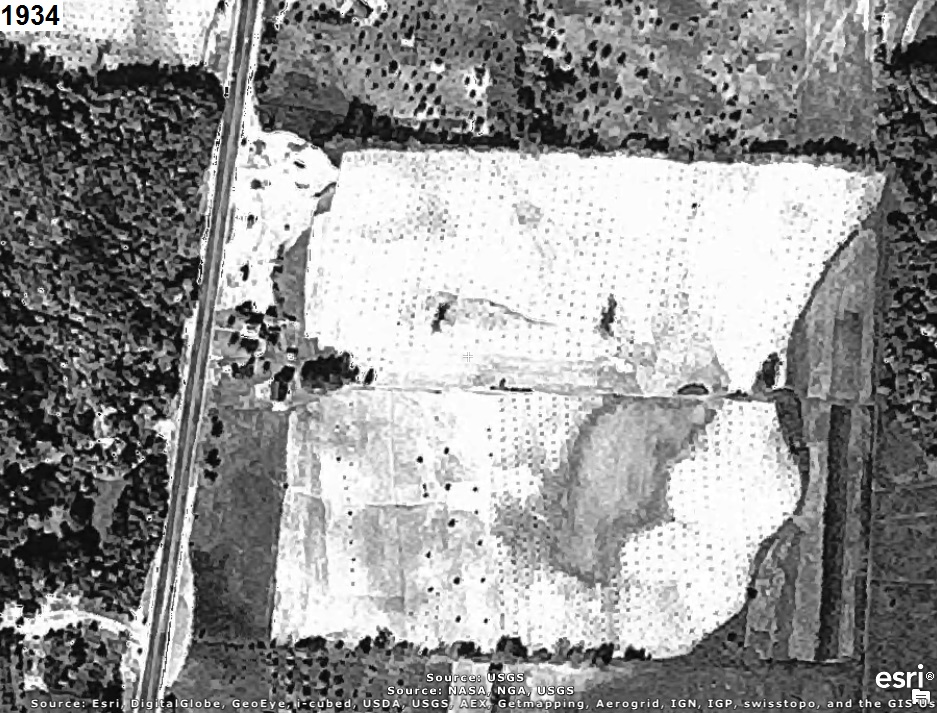
Television News Reports are provided in the videos at the links below:
Clip 1 Clip 2 Clip 3 Clip 4 Clip 5 Clip 6 Clip 7 Clip 8 Clip 9Important videos are provided below:
Clip 10 Clip 11 Clip 12 Clip 13 Clip 14 Clip 15 Clip 16 Clip 17
Clip 18 Clip 19 Clip 20 Clip 21 Clip 22 Clip 23 Clip 24
Evidently, the former IEL employee from southern California, mentioned in the last video above, wrote the letter to Bob Martin of the Washington D.C. EPA as documented in the INDUSTRIAL EXCESS LANDFILL SUPERFUND SITE, PUBLIC MEETING, MARCH 2, 1999, 7:00 p.m. The letter written and read during the Public Meeting is provided at Letter to EPA Washington D.C.
The properties purchased by the EPA are identified below:
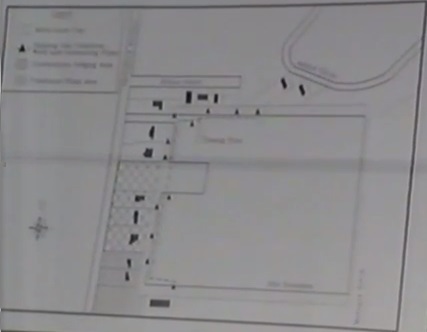
The LTCAG IEL Maps & Images follow with the description and date given below each image exactly as given by the LTCAG. Aerial photos are inserted where appropriate.
Note in the report below that the radiation measurements were taken on land that was never part of 1934 Aerial Photo

1942 Aerial Photo
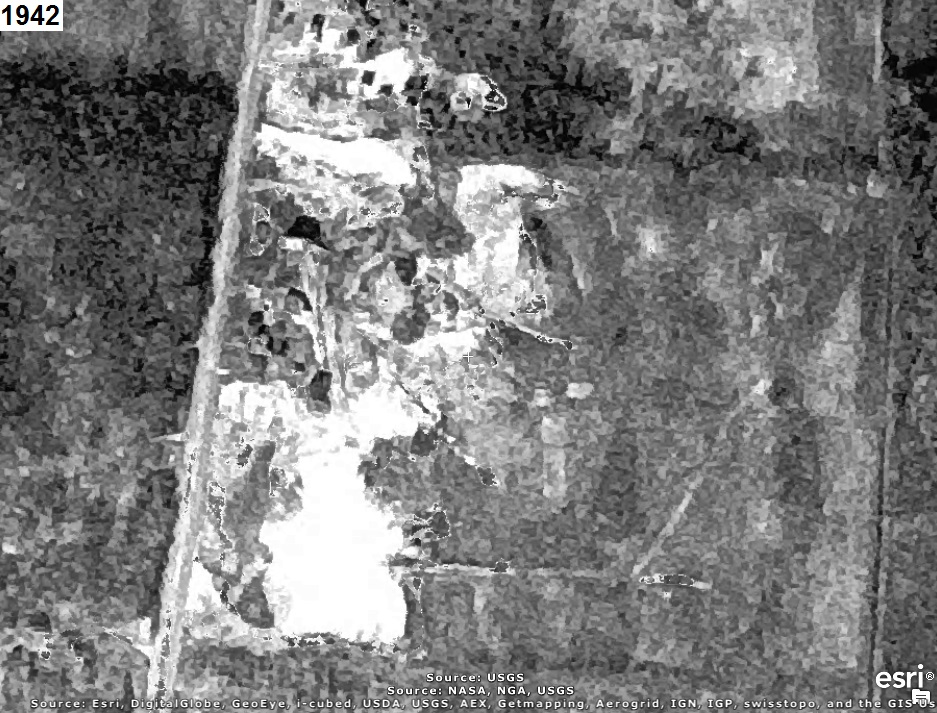
1950 Aerial Photo
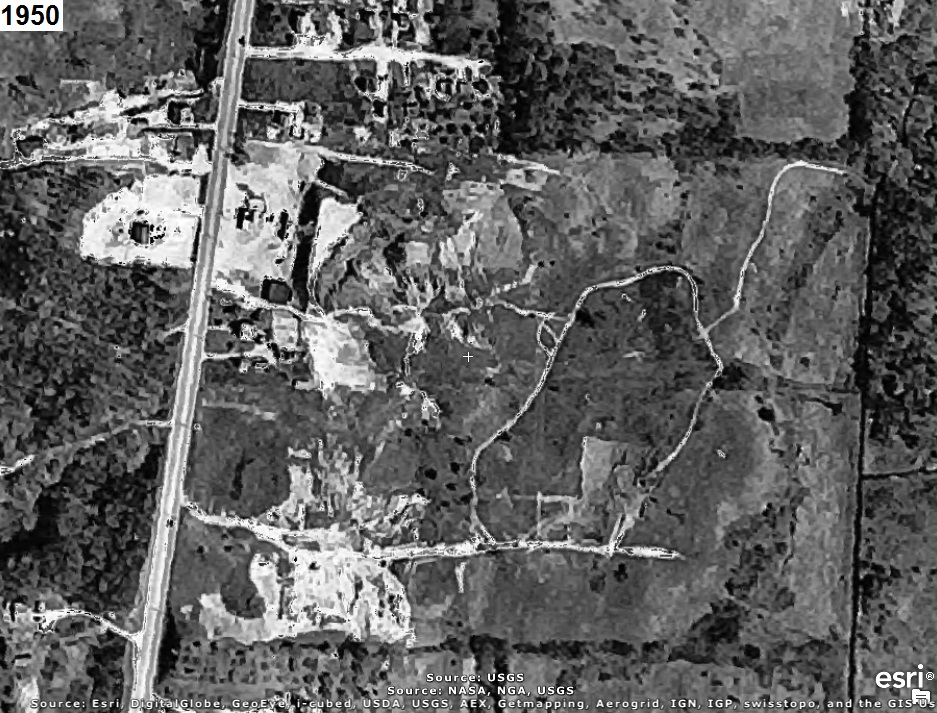
1958 Aerial Photo
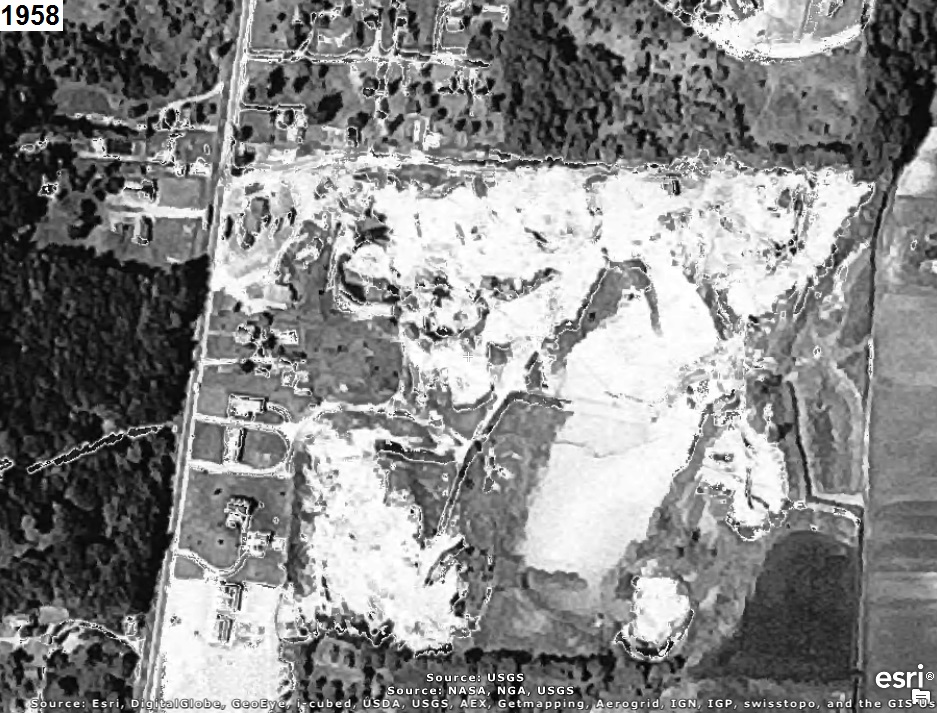
1965 Aerial Photo
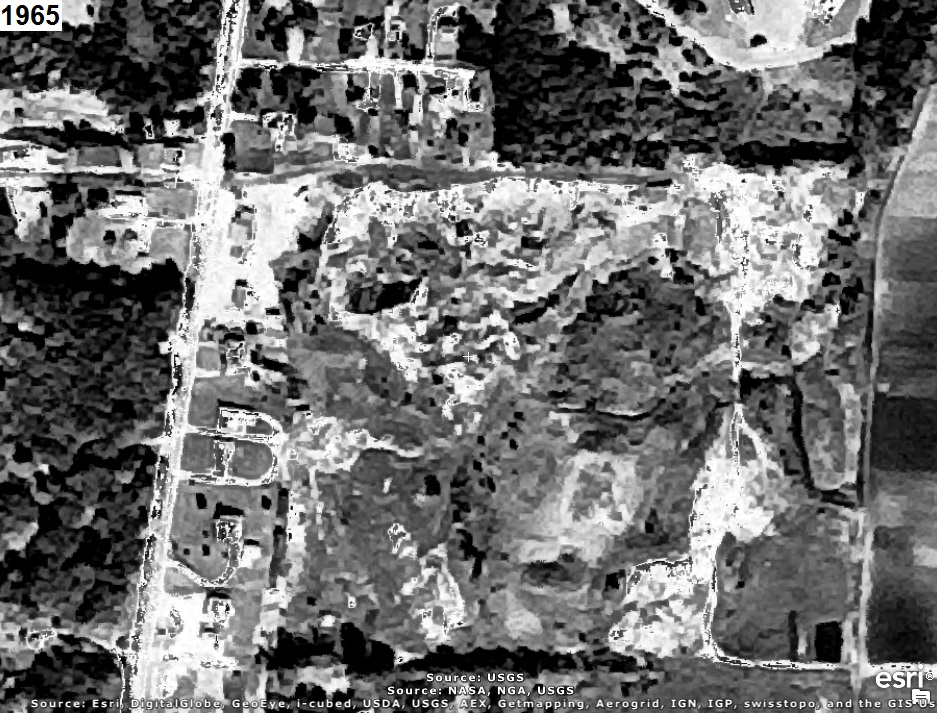
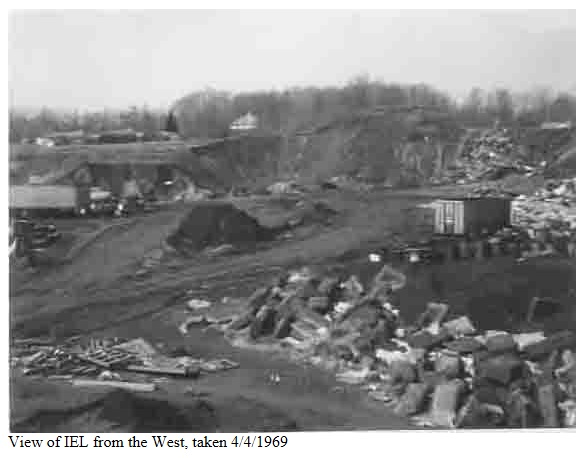
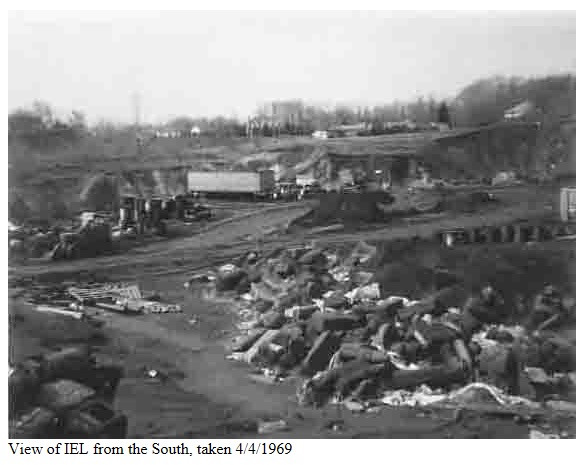
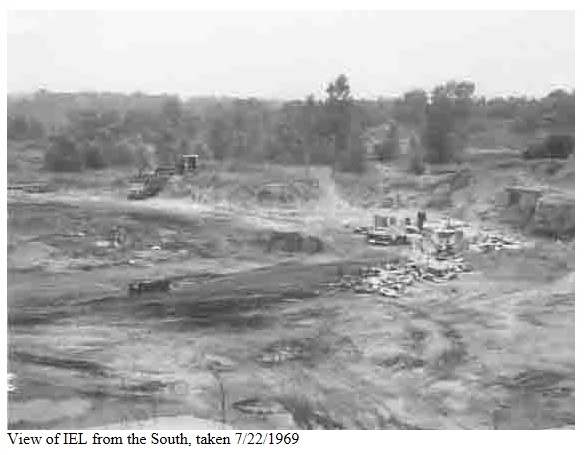
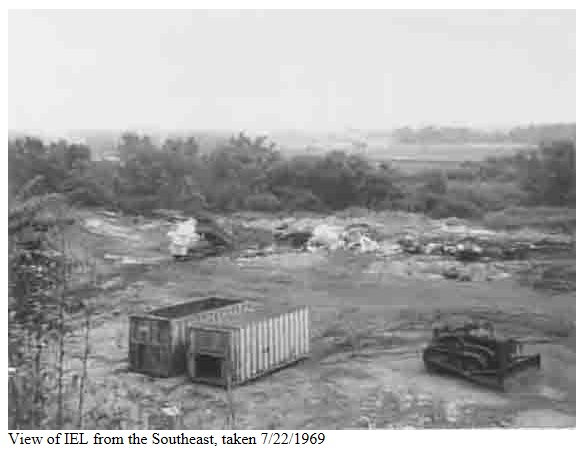
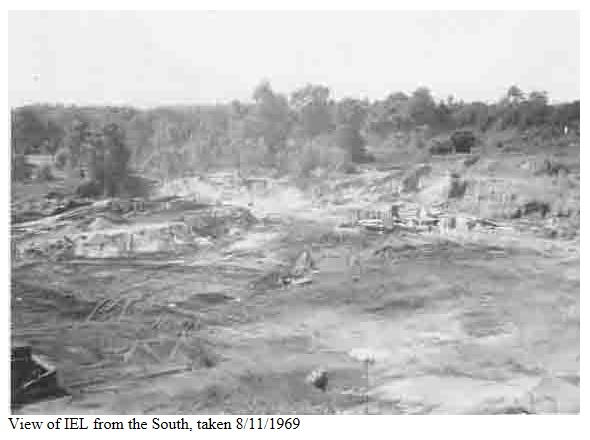
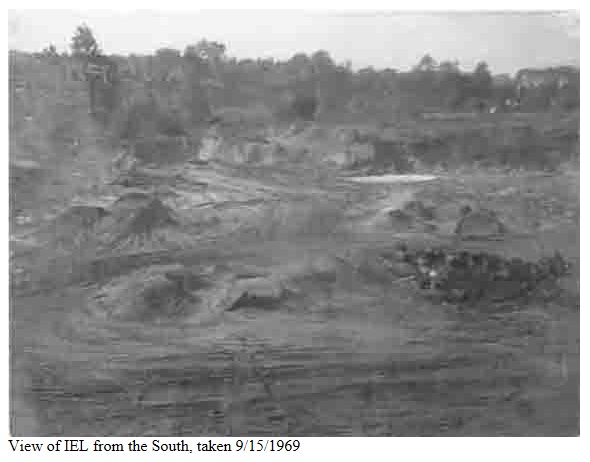
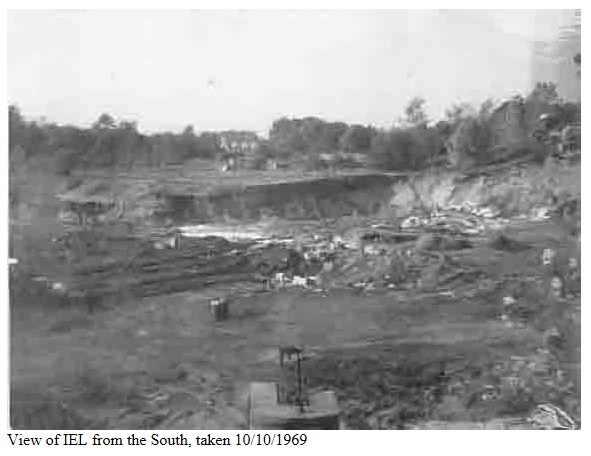
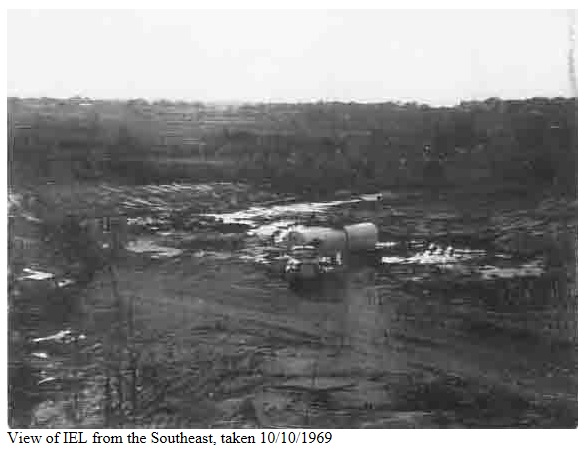
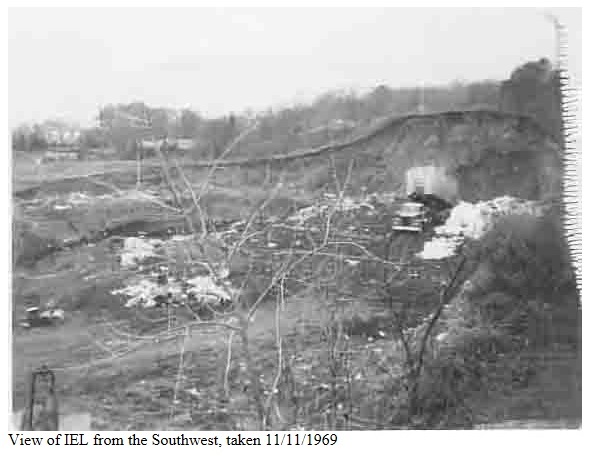
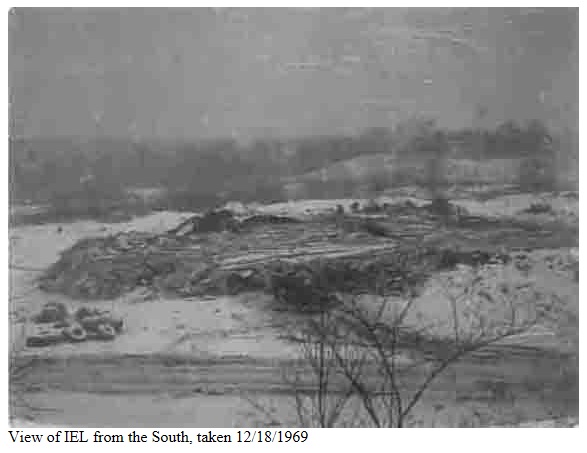
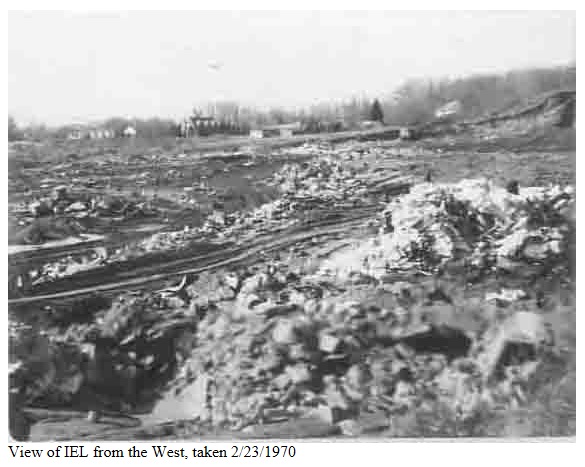
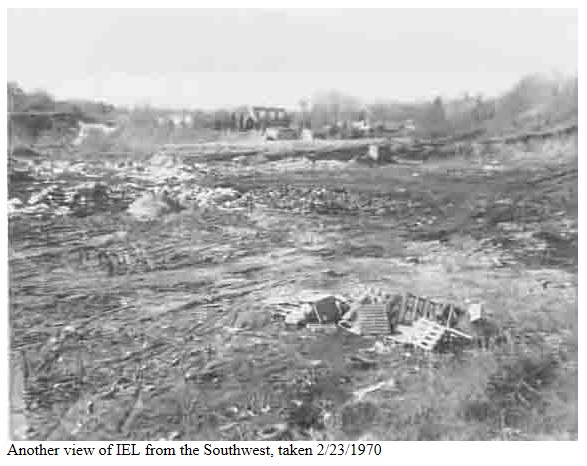
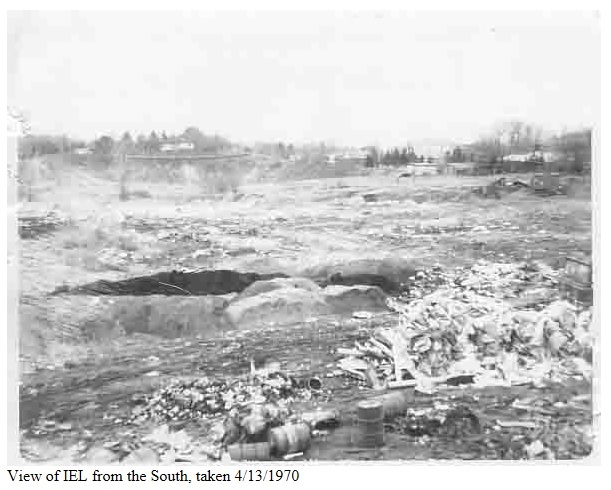
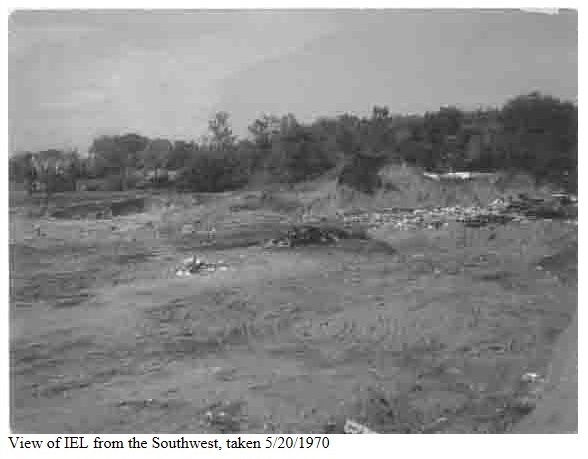
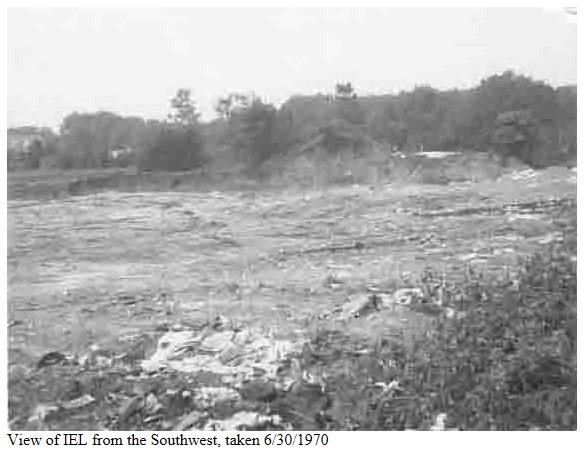
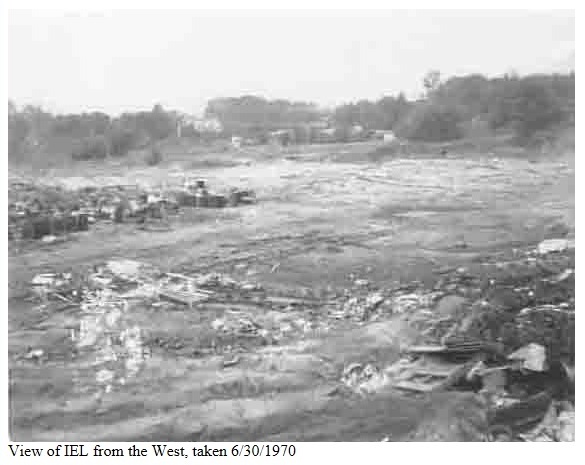
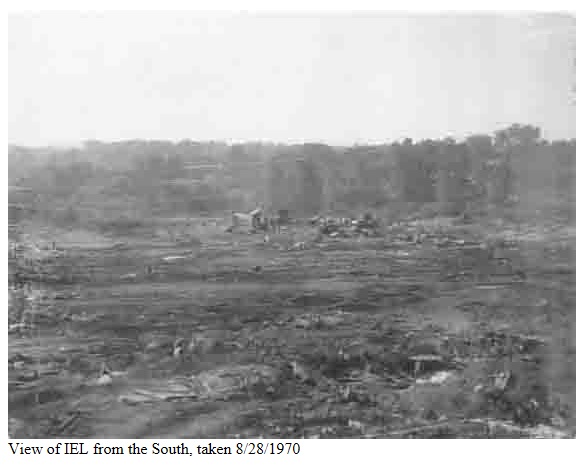
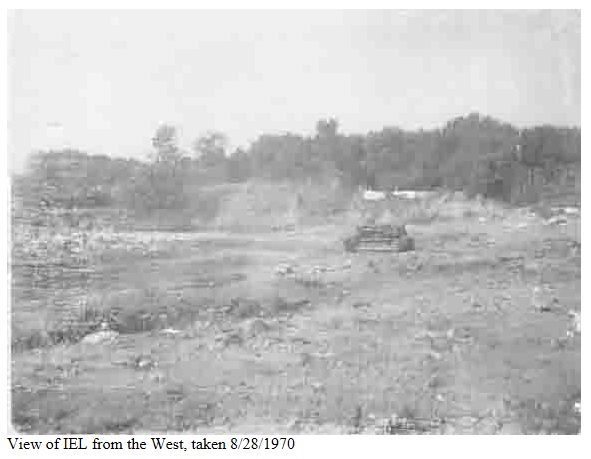
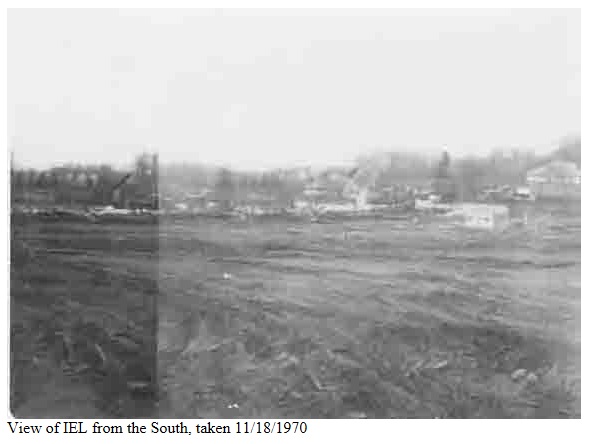
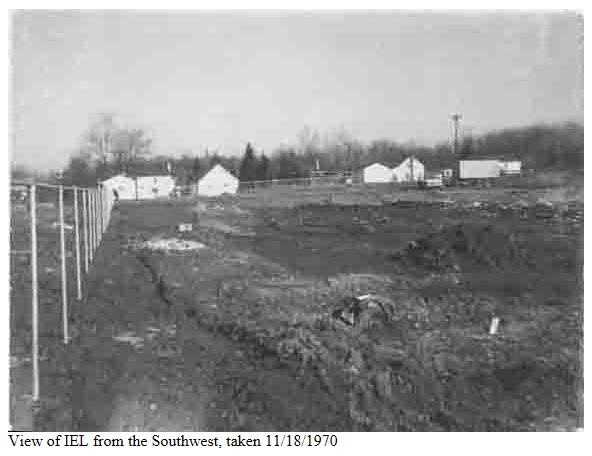
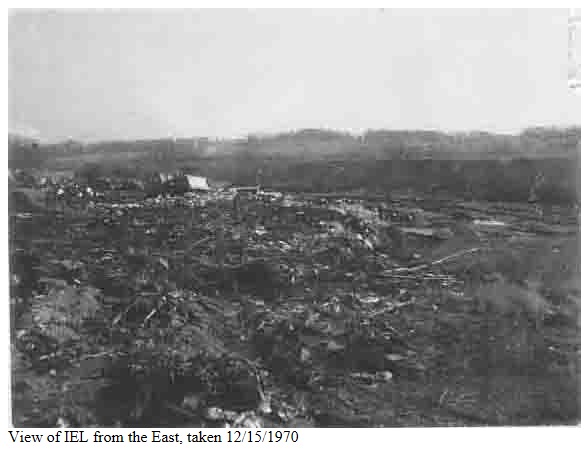
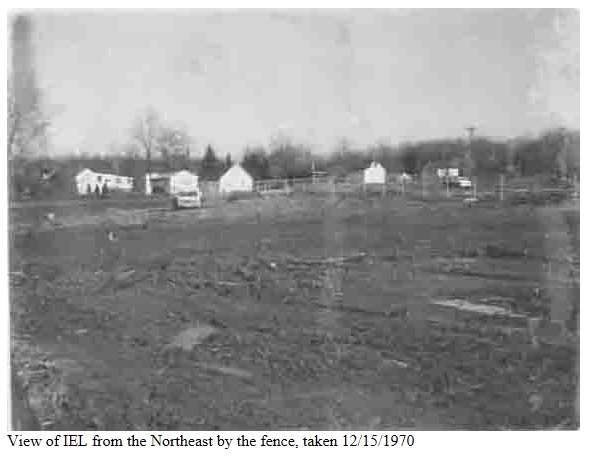
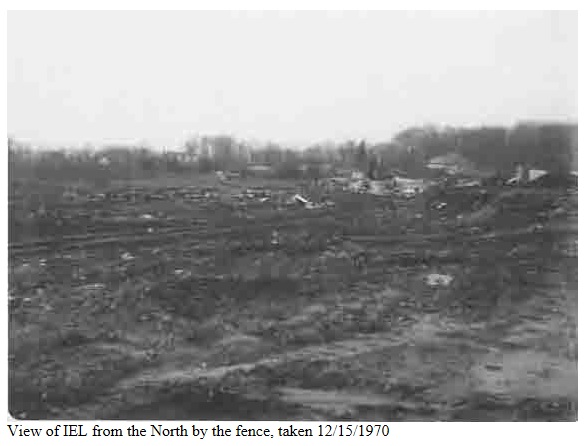
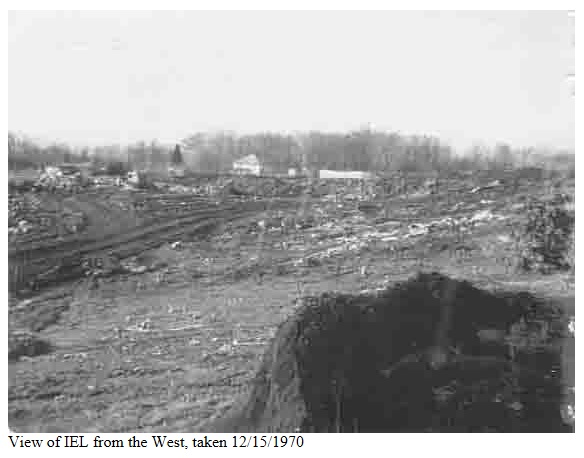
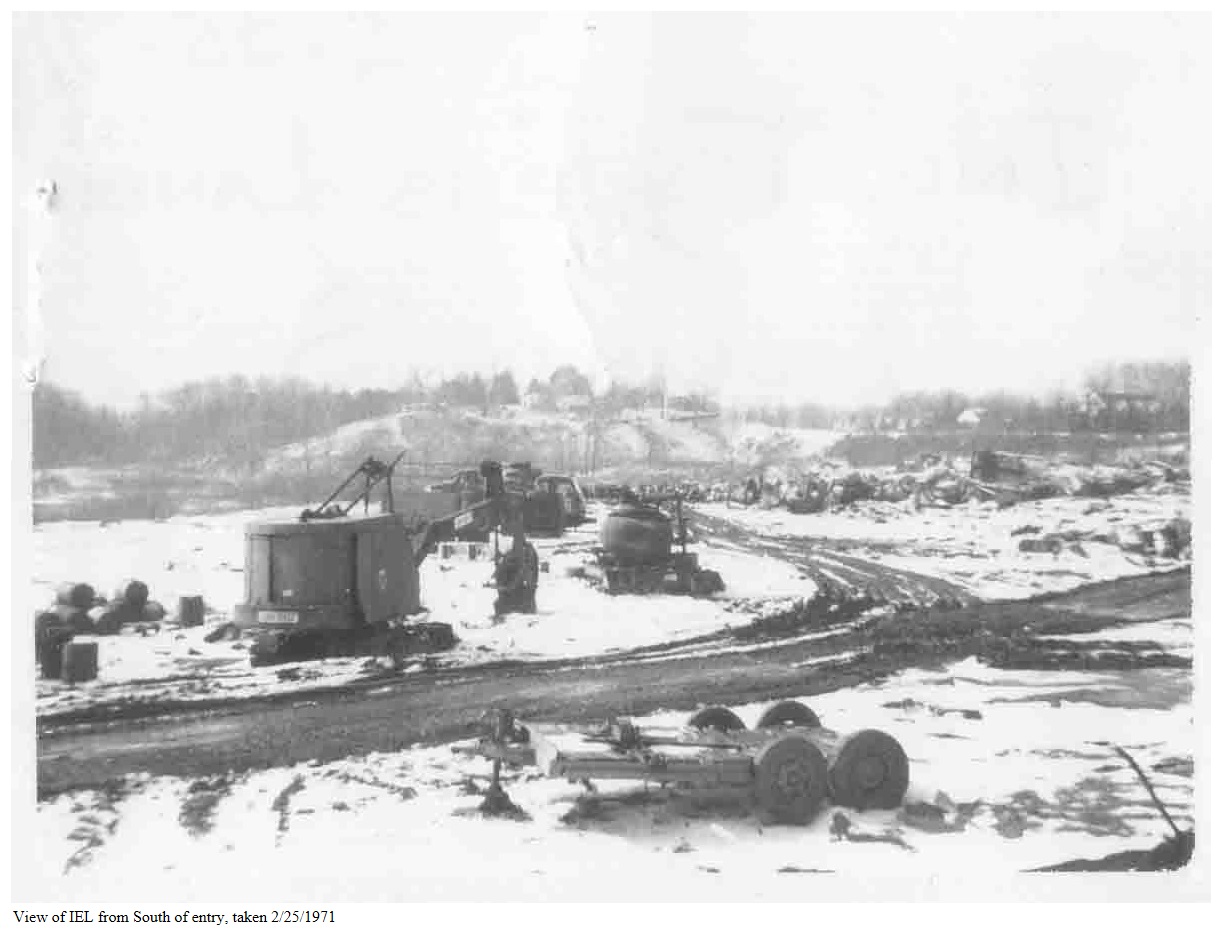
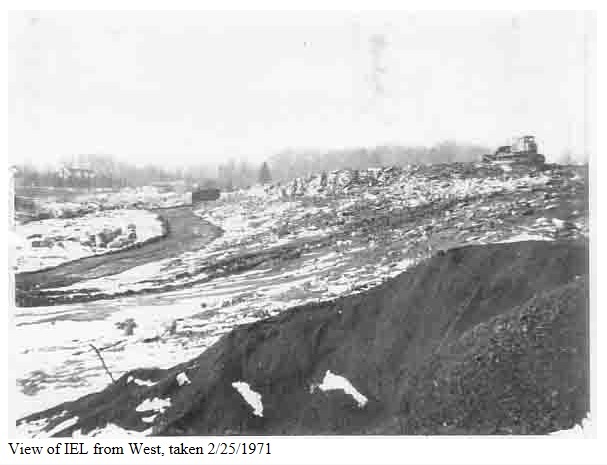
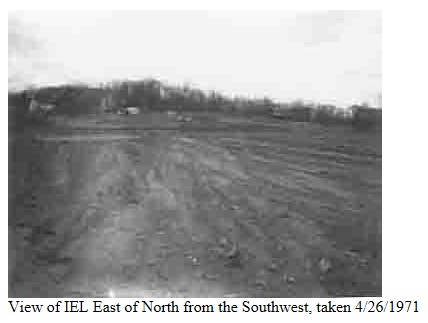
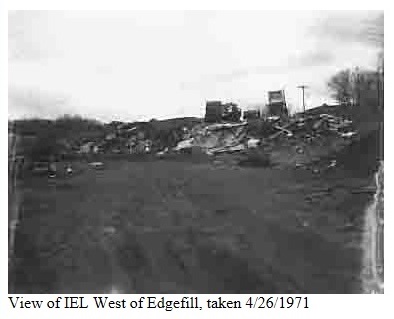
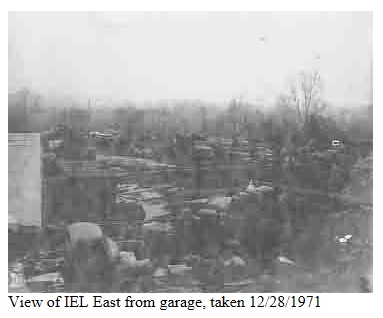
1972 Aerial Photo
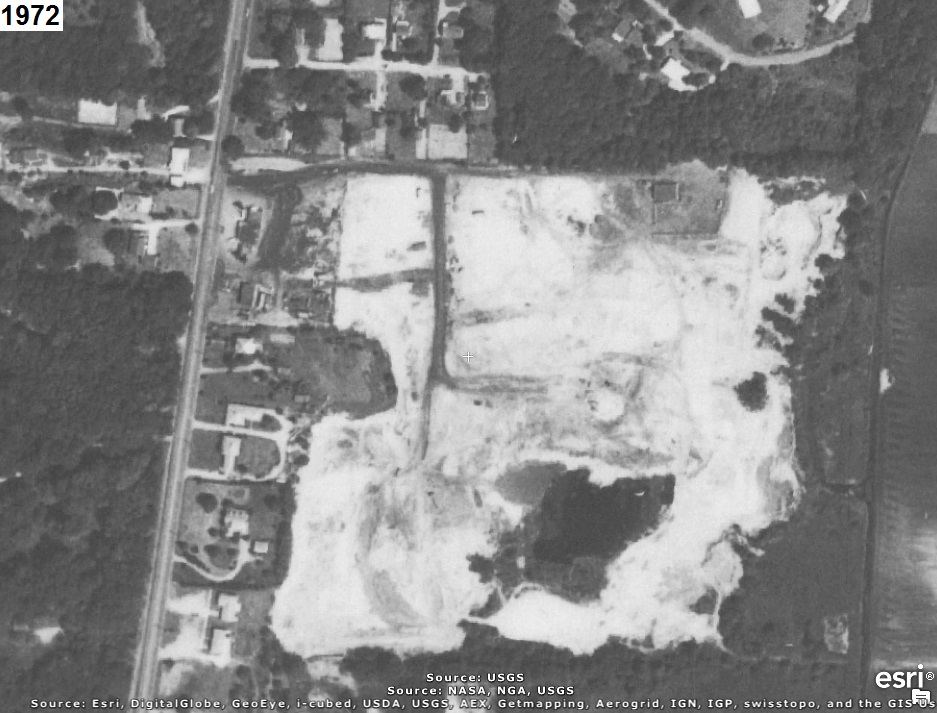
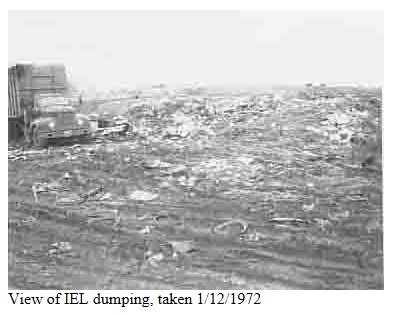
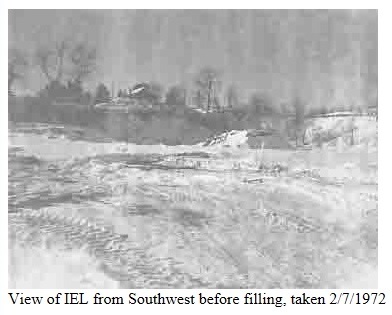
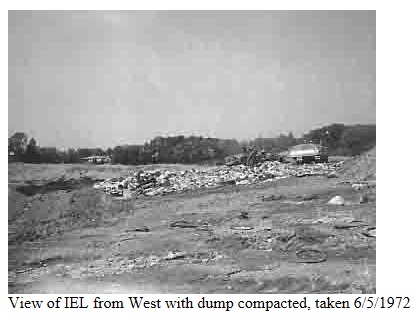
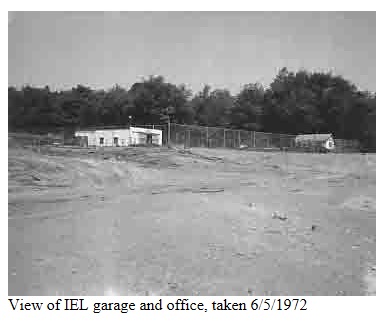
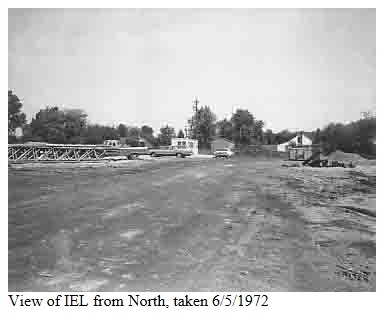
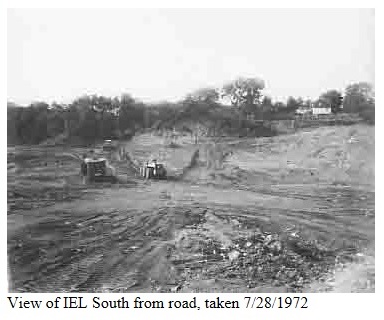
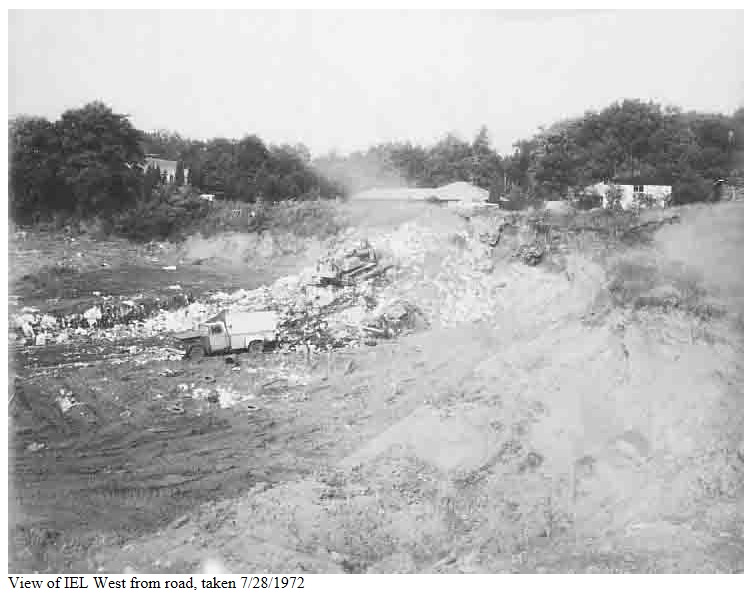
1975 Aerial Photo
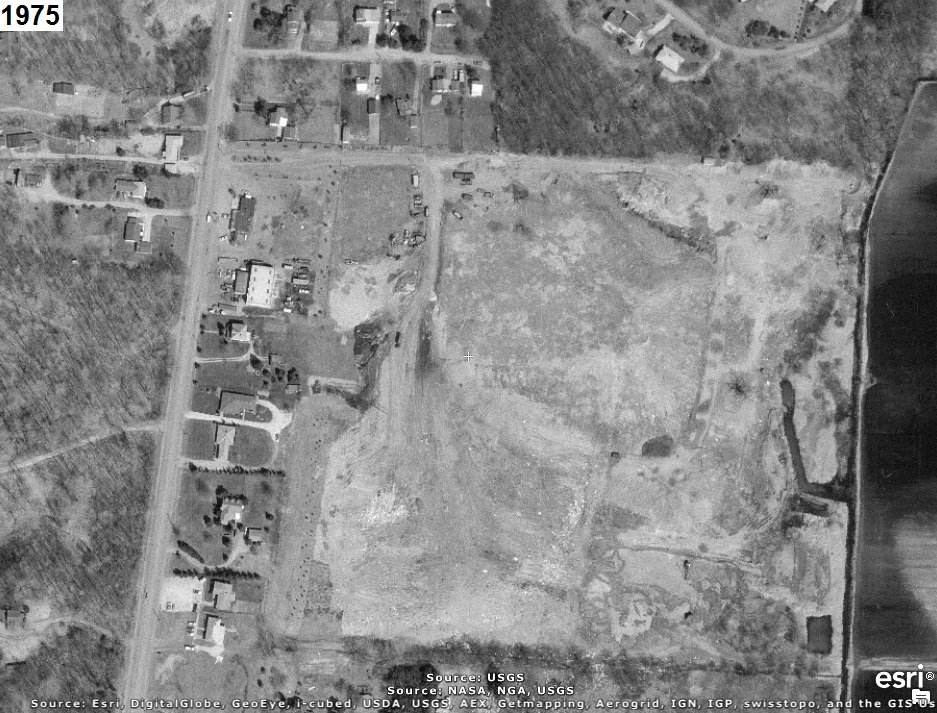
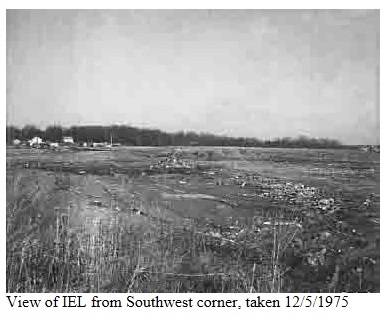
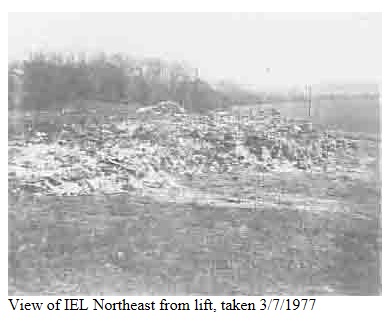
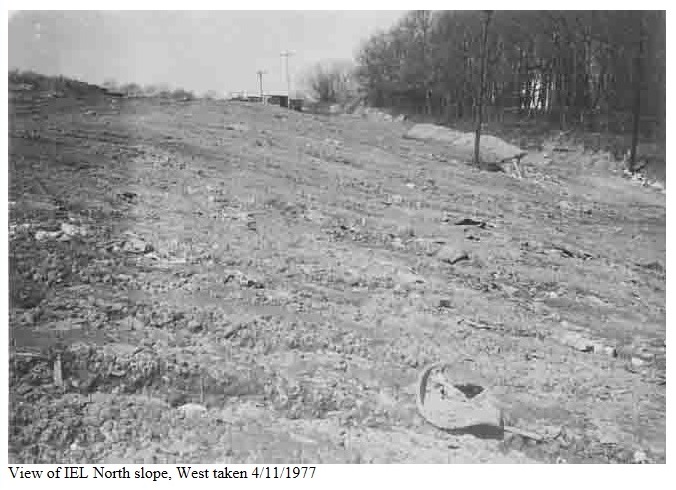
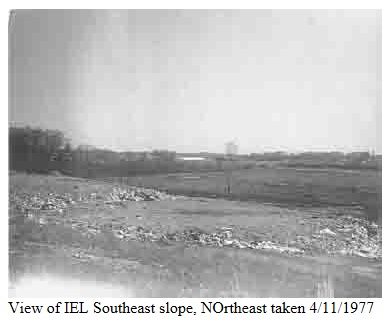
1980 Aerial Photo
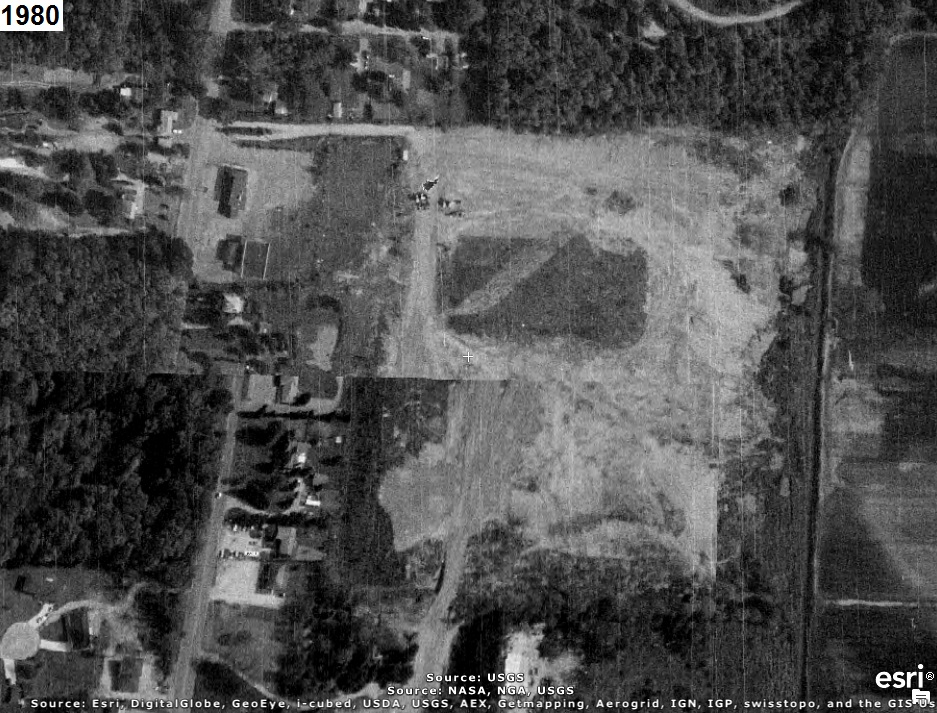
1985 Aerial Photo
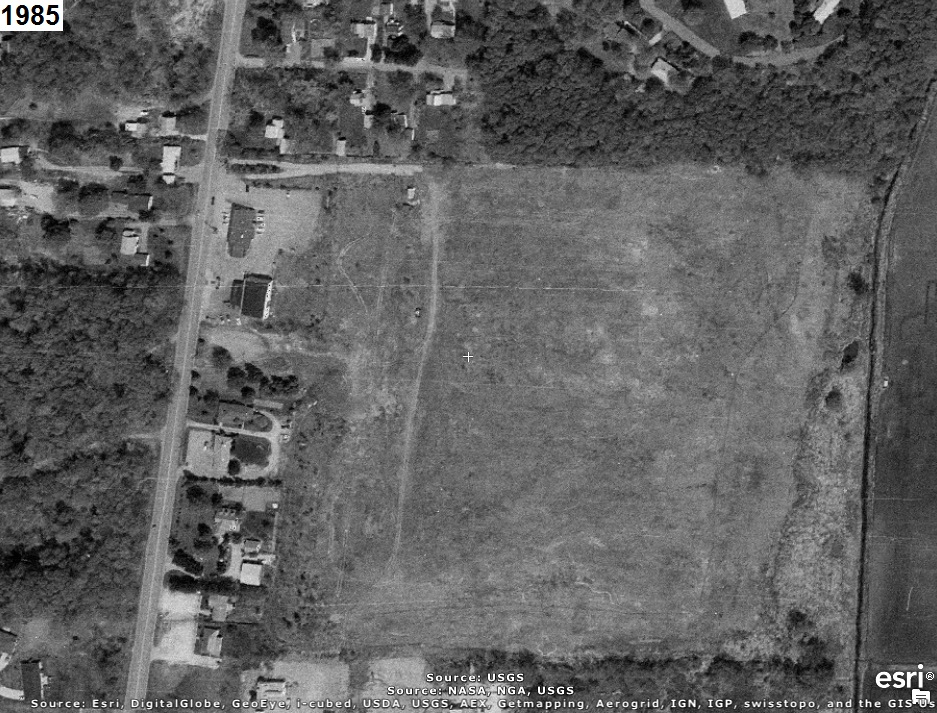
1991 Aerial Photo
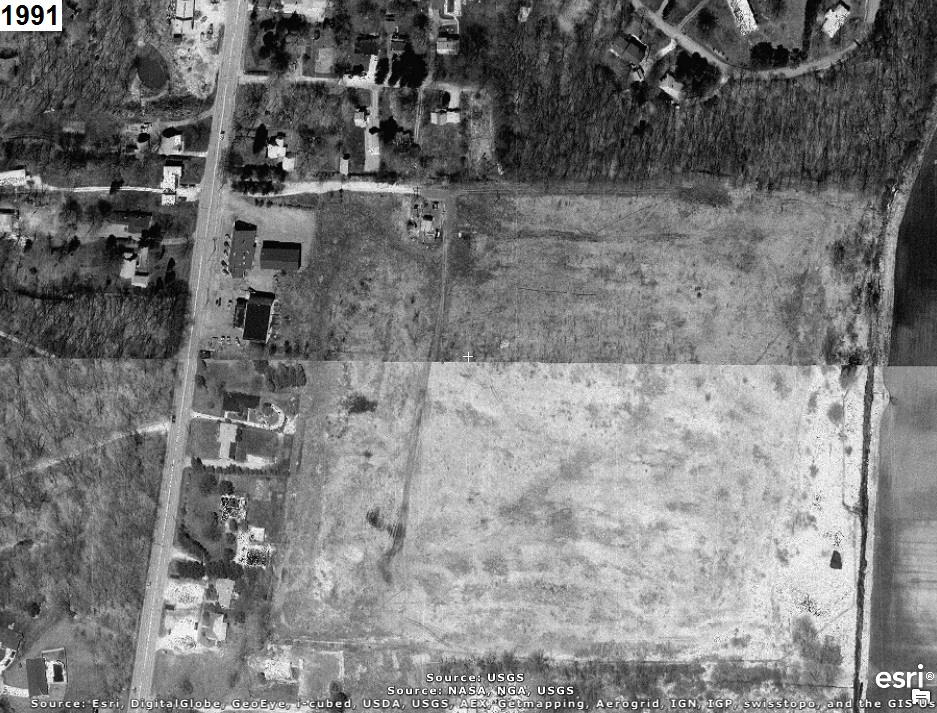
1997 Aerial Photo
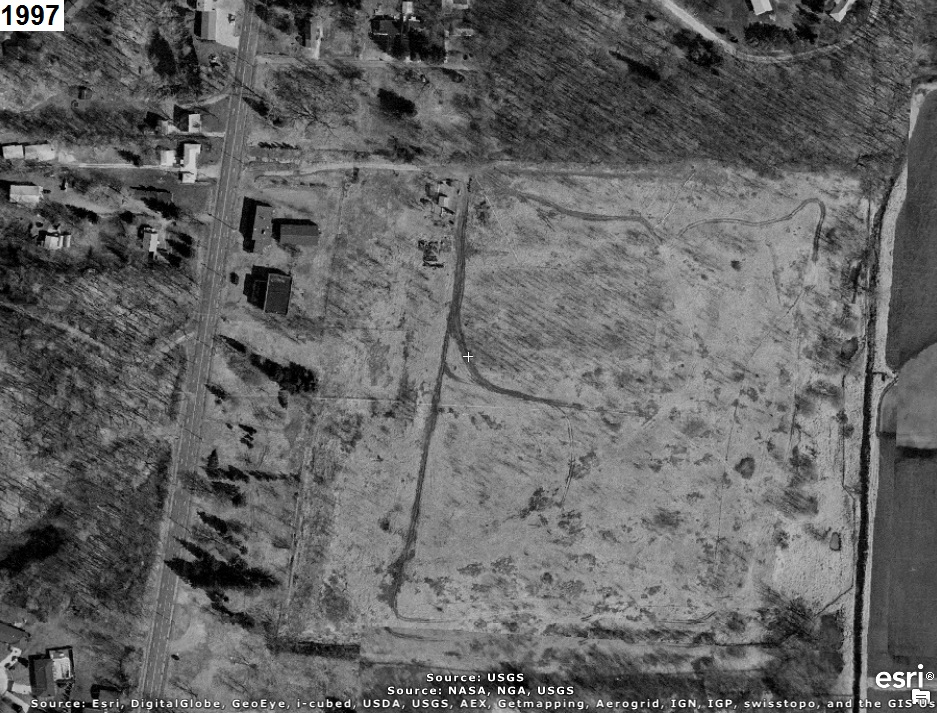
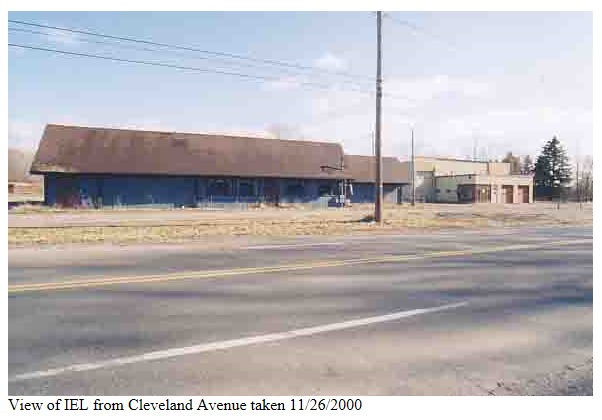
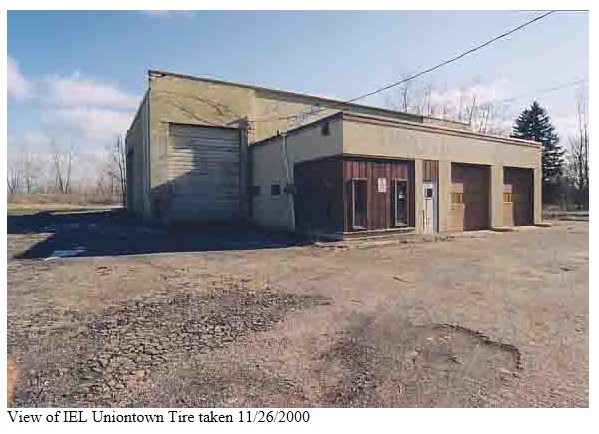
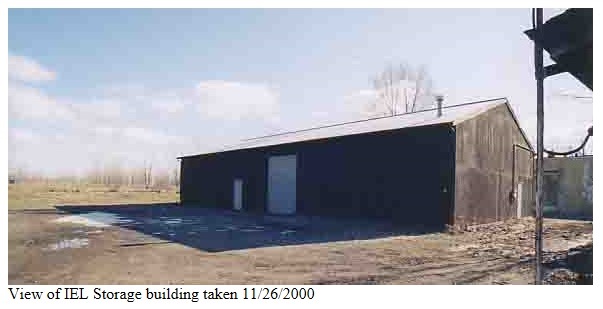
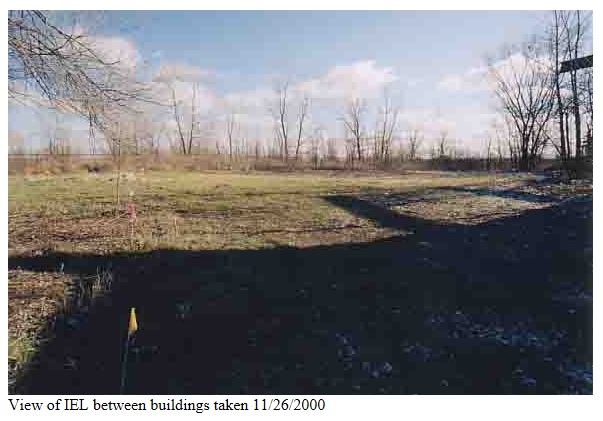
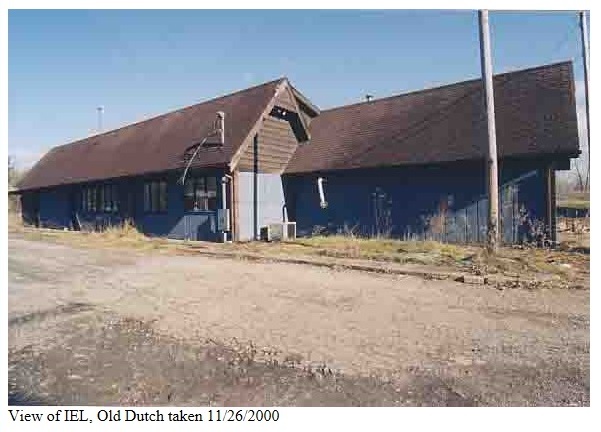
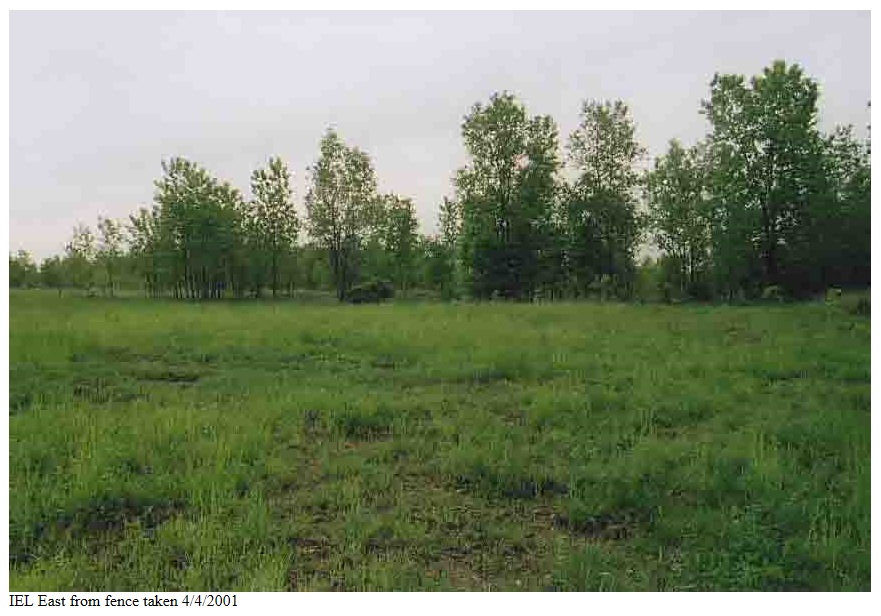
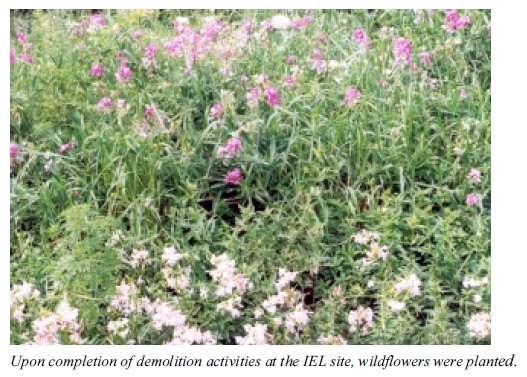
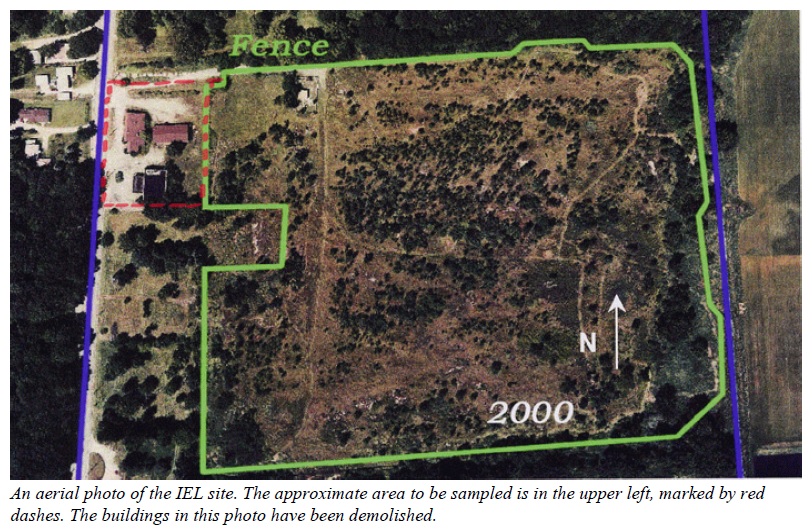
Recent Aerial Photo
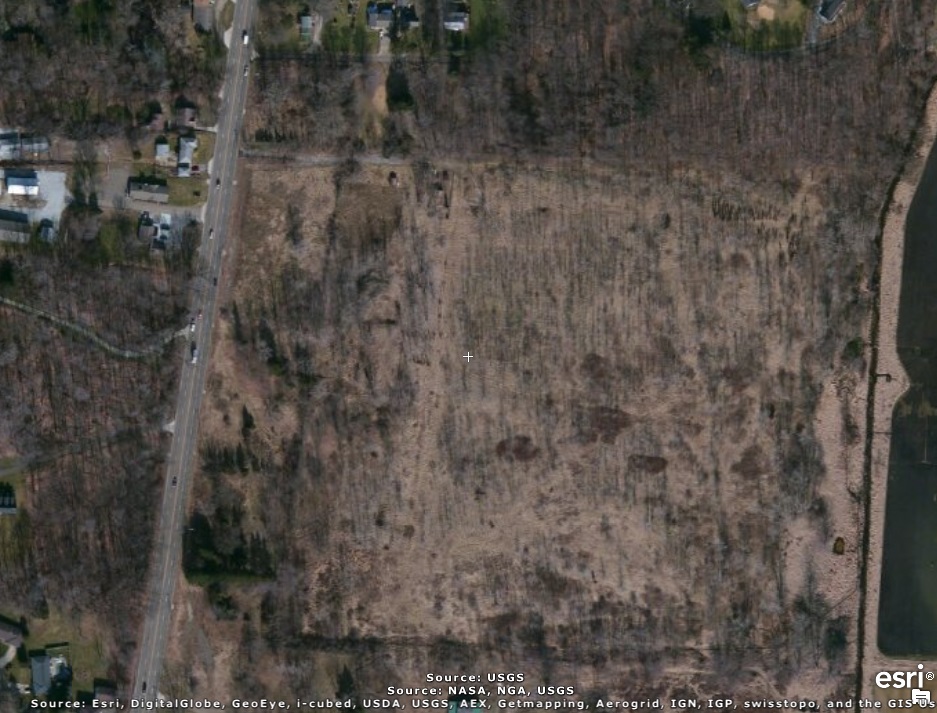
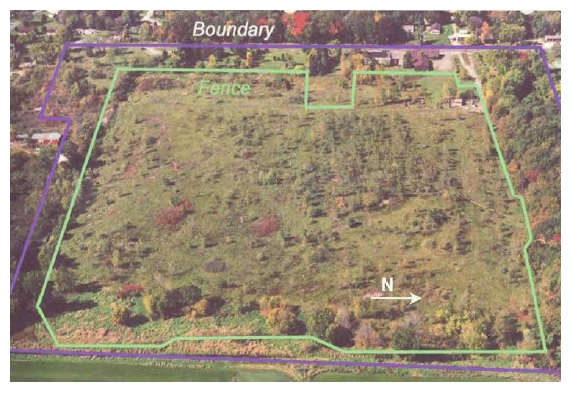
IEL:
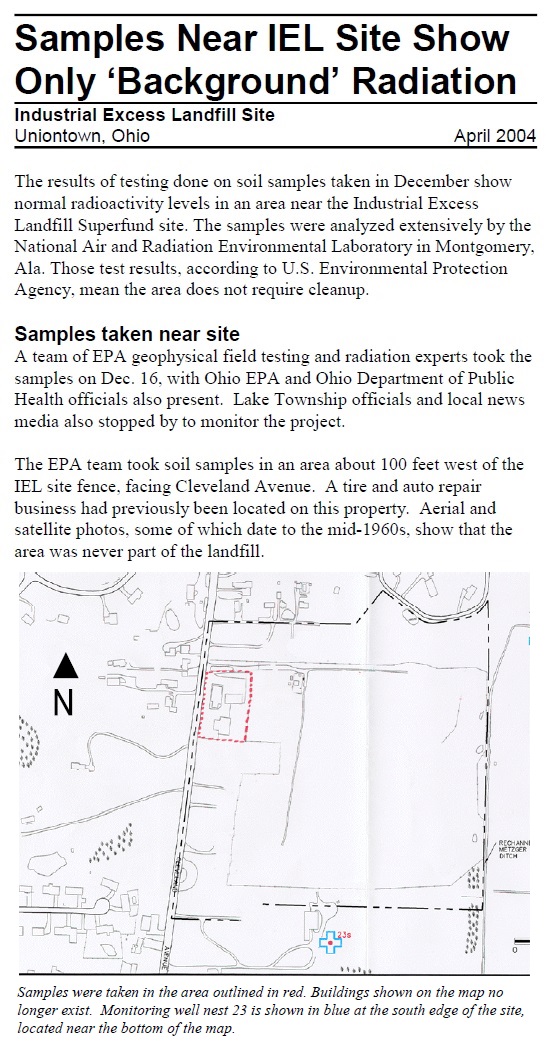
Instead, the radiation measurements were taken on land inside the yellow rectangle below that was
never part of IEL:
Those measurements were taken on the property where the building in the winter photo below was
located:
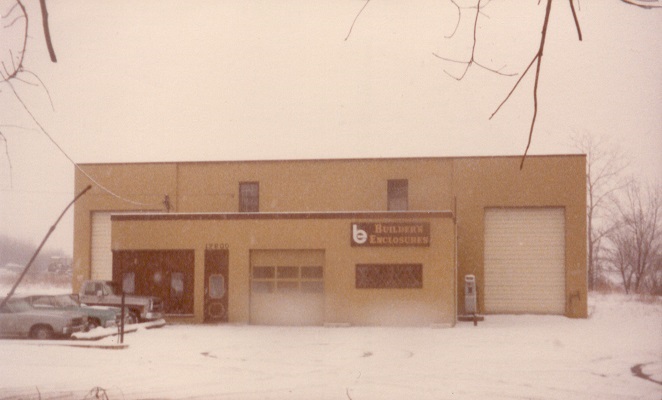
The letter from Mr. Shover to Bob Martin of the Washington D.C. EPA follows as documented in the INDUSTRIAL EXCESS LANDFILL SUPERFUND SITE, PUBLIC MEETING, MARCH 2, 1999, 7:00 p.m. and read during the Public Meeting:
Dear Mr. Martin: I'm writing this letter to inform you of my personal knowledge concerning the IEL site in Uniontown, Ohio.I was born in Akron, Ohio on March 31st, 1948 and resided with my parents and brothers at 467 Stetler Avenue. In 1952 we moved to Uniontown, and at that time Uniontown population was less than 500 people. I soon discovered that many families there were related to each other through one degree or another.
Every house in Uniontown was supplied with water by their own well with the exception of the Madroo farm where my three great-aunts lived. Their land was located west of Old State Route 8, now Cleveland Avenue, across from the IEL site and was about 27 acres in size.
Their drinking water came out of the ground from a natural spring located northeast of the present day farmhouse and flowed down the creek in a north to south direction where it ran into a pond. A pipe delivered this water from the creek to a cistern in the basement.
The public health department monitored this water on a yearly basis and was considered to be the cleanness and purest water in Uniontown according to my three aunts. My brothers and I drank water directly from this creek many times during our youth without any danger of any kind.
During the years that I was growing up in Uniontown I never once have heard of anyone with cancer, leukemia or having any kind of birth defects. Most people died of old age, natural causes or accidents. Old age being defined as early 80s to mid 90s.
Now I hear that the cancer and leukemia levels are about the national average or above the national average and one child was born without a brain.
The IEL was originally a sand and gravel pit until sometime between 1959 and 1961 at which time trash and junk started to appear at this site.
During the summer of 1964 I met and started dating Melissa (Missy) Kittinger. Her father, Charles Kittinger, I soon found out was the owner/operator of Kittinger Trucking Company and was leasing a three acre IEL site.
During the winter of 1964 and '65 Mr. Kittinger employed me part-time as a mechanic's helper to assist in repairs of his trucks at the IEL site. I was told by Mr. Kittinger at one time that I was not to walk beyond a certain point behind the maintenance building because there was hazardous material there and he didn't want anyone exposed to it.
On many occasions I rode along with the dump truck drivers to pick up waste materials from Seiberling Rubber, Firestone, Goodrich, General and Goodyear Tire & Rubber Companies in Akron. This waste material was then driven to the IEL site in Uniontown and dumped.
In 1966 I enlisted in the United States Navy, which started a 25 year career both in the military and in Civil Service with the Department of Navy. While stationed at the navel air station in Norfolk, Virginia I received formal training in nuclear, biological and chemical warfare and served as a member of the NBC rapid response team.
In June of 1970 I returned to Uniontown after my first enlistment and can remember that on several occasions from 1966 to 1971 observing U.S. Army tanker trucks with radioactive material placards affixed to them both coming and going from the IEL site.
It must be understood that during my first enlistment that I would routinely return to Uniontown on weekend liberty and military leave. My knowledge today is that the Army trucks that I observed were especially designed double-lined tankers designed to transport liquid radioactive waste material.
I reenlisted in the United States Navy in August of 1971 for four more years during which time I received formal training as an industrial radiologist -- radiographer. This schooling increased my knowledge of radiation, radioactive materials and associated health problems on humans and the nuclear regulatory requirements as specified in Title 10.
On February 28th, 1977 I was hired at the Philadelphia Navel Shipyard as an industrial radiographer and transferred to the Long Beach Naval Shipyard in California in July of 1981 to continue my career in the same capacity.
From 1977 to 1994, at which time I retired as a GS-11 quality assurance specialist in ship building, I received extensive training and experience concerning radioactive materials, radiation safety, the health effects associated with radioactive materials and ionization radiation and the Nuclear Regulatory Commission requirements as specified in CFR Title 10.
During my career I have worked with high energy x-ray machines, Cesium 137, Iridium 192 and Cobalt 60. I was properly trained in safe handling thereof.
Today I'm employed as a nondestructive testing inspector for a company in Garden Grove, California. In December 1988 we were contracted to perform inspections at the San Onofre Nuclear Generation Station (S.O.N.G.S.) located in San Diego County, California at which time I received training in nuclear safety, security, hazardous materials, hazardous waste and et cetera prior to performing our required inspection during the outage phase and refueling of unit two.
I will return there again in March of this year for more training prior to inspecting unit number three during its outage phase for repairs and refueling and will require more training.
This basically sums up my knowledge and experience in the aforementioned topics. I will now focus on the problems at the IEL site in Uniontown.
I find that the presence of so many types of radioactive materials and the energy levels being emitted at the IEL site and in the surrounding groundwater to be a very serious problem and could create long-term health problems.
Now referring to an article written by Bob Downing, a staff writer for the Akron Beacon Journal that was published on Saturday, January 23rd, 1999, "Toxic Heavy Metals That Appeared to be a Puzzle Based on 1997 Test Results were Reanalyzed Using a Different Testing Method." His question is this, what testing method was used, the magic wand technique?
Joseph Towarnicky of the Columbus-based Sharp & Associates made the statement, "Metals do not seem to be an issue." Really? Now, Mr. Towarnicky is either a bona fide idiot or he's been taking lying lessons from President Clinton.
Cobalt, uranium, thorium, plutonium, strontium, cadmium and radium are heavy metals and have been found in the groundwater in and around the IEL site. Mr. Towarnicky states that heavy metals do not seem to be an issue.
Now, Mr. Martin, I have some serious questions concerning the IEL site. Is the Nuclear Regulatory Commission involved in any of the cleanup and monitoring of the IEL site? If not, why?
The U.S. N.R.C. is responsible for the licensing requirements for anyone manufacturing, handling, shipping, receiving, disposing and storage of radioactive materials and waste by-products including monitoring requirements, training and the associated records thereof.
Did the U.S. Army hold an N.R.C. license to transport and dispose the radioactive material at the IEL site? Did Kittinger Trucking Company and the owner of the IEL site have an N.R.C. license to receive and store radioactive material? To my knowledge they did not.
Did the IEL site meet the requirements of a disposal site for radioactive materials as specified in U.S.C. Title 10? To my knowledge the answer is no.